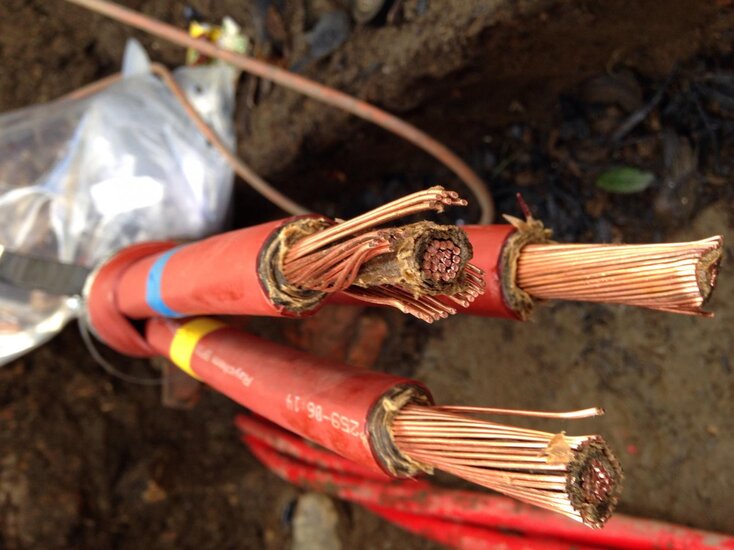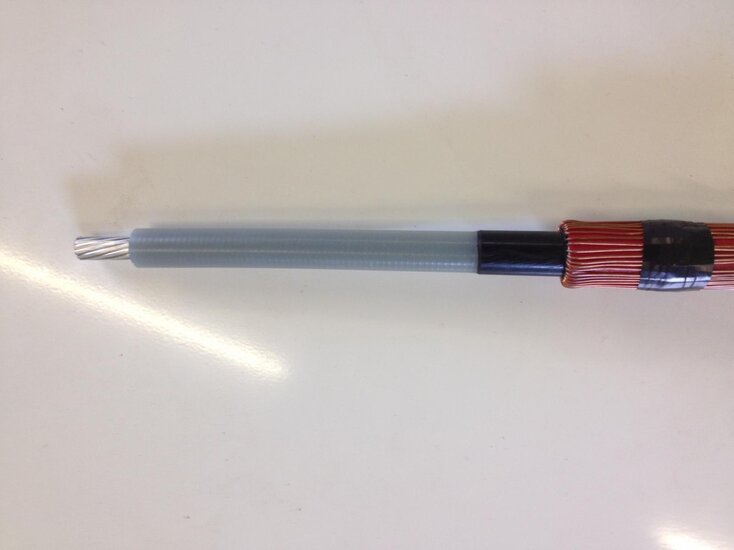A
axel132132

 An
An anyone tell me what type of cable this is? Its hv cable underground for electric board but never seen it before and engineers have no idea its rated at 11kv - the outer stranding bells through to the inner core but what are the papers between about
engineers are confused say its not a screen or a strenghtening
ideas anyone? Its old around 1910 tape armoured lead covered cable










